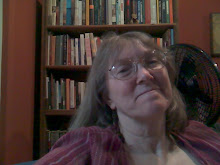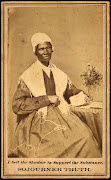The theme of my English 387 course will be What do we talk about when we talk about theory? Where are we and how in the world did we get to this particular postmodern place in time? By starting with disabilities theorist Lennard Davis and his critique of the critics who ignore the scars on the Venus de Milo, then reading some Plato, then reading Aristophanes's The Frogs (with a side trip to his "creation myth" in the Symposium) we begin by setting up a questioning of the idea of ideals, Plato's perfect forms to which the concrete objects of our world are mere imitations and art an imitation of an imitation. Judith Butler discusses this idea in terms of gender, questioning whether there's any there there. In the course of this questioning, we're getting the history, but we're linking it with now. I'll be linking Judith Butler with Plato and Aristotle and Aristophanes, since all are dealing with mimesis and perfomance--the idea of what comes first, what creates what, the idea or the lived experience. I want to get Briar Rose in there somewhere, fairly early, but I'm not seeing yet how it fits in. Maybe I want to include bell hooks early on, too. We'll see the dead white men through the perspective of resisting readers. And what about Sappho? This isn't a world lit class, but why not use literary writers from the same period or cultural background as the critics? Janet has a page in her course packet with quotations about beds. I'm guessing that this relates to Plato's discussion of forms. I can use this as a handout, but also start off by asking class members to describe their beds (or alternatively, their tables) and play Dylan's "Lay, Lady,Lay" and TMBG's "Bed"--are there others? There's also the Bed of Procrustes and the bed of Odysseus and Penelope.
More on this later. I'm wondering about how one might do lists on a blog. I'd like students to start collecting lists to engage our thinking: 1. WORDS--new vocabulary to them (for me a new word is oneiric--which refers to a sort of dream state--not exactly surreal--that dreamy feeling you have just on the edge of sleep--movies can induce this state) but also words we think we know being used in ways specific to literary theory or to a specific theory--not just definitions, but connotations, oppositions, intertextualities, contexts, symbolism, etc.; BINARIES--oppositions explicitly or implicitly set up by various writers--we'll look at these like deconstructionists--use them as an analytical tool; NAMES, THEORIES, LABELS--of theories and theorists, but other names, too--writers, artists, anybody who seems relevant along the way; DATES AND PERIODS--a time line to help us keep track as we move back and forth in time, cultural settings, the isms--e.g. modernism, romanticism, etc. ; QUESTIONS that come up in discussions and as we read--if it goes as it should, we'll end with more questions than we started with; FURTHER READING--discussions will focus on assigned readings, but we all need to keep lists of books and articles we'd like to read when we have time; INTERTEXTUAL CONNECTIONS--may work better in blog entries than as a list, may happen too quickly to record.
Subscribe to:
Post Comments (Atom)











No comments:
Post a Comment